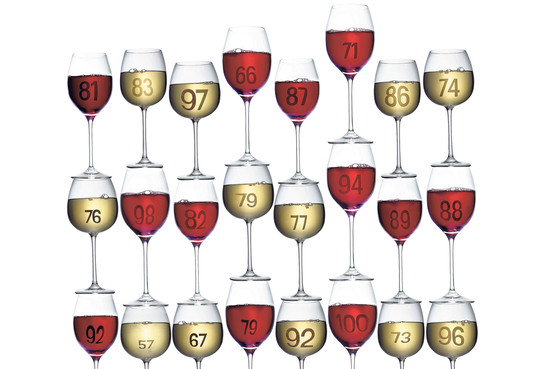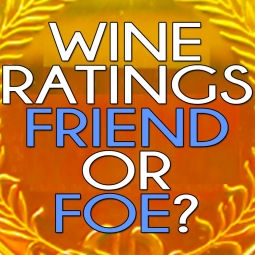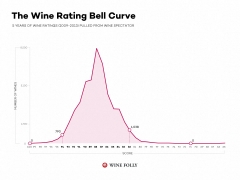 At its best, the art and science of wine blend together and become a compound inseparable from each other, and thus, like art, wine at times often transcends our ability to measure its quality empirically. Sometime ago I wrote an article called “The rating of wine … where does one begin?” http://www.signaturewines.com/blogger/the-rating-of-wine-where-does-one-begin.
At its best, the art and science of wine blend together and become a compound inseparable from each other, and thus, like art, wine at times often transcends our ability to measure its quality empirically. Sometime ago I wrote an article called “The rating of wine … where does one begin?” http://www.signaturewines.com/blogger/the-rating-of-wine-where-does-one-begin.
This article, now almost two years old, has been visited over 178,000 times. It seems clear to me that the topic of wine ratings, and understanding the power and influence they possess, underscores many of our biases, desires and behaviors when it comes to selecting, purchasing, collecting, investing and even choosing which wine to imbibe.
In my previous article I describe the 20 point scale that intends to offer an empirical process for applying a measurement scale to the qualities of wine. I also promised to visit and write about the 100 point scale utilized and made popular by wine critic Robert Parker Jr. My intention here is to briefly discuss the 100 point wine scale with the goal of expanding upon my opinions rather than presenting some kind of thesis on this matter. Needless to say, wine ratings are important and do have measurable effects on the economics of a wine.
Needless to say, wine ratings are important and do have measurable effects on the economics of a wine. 
In the late 1970’s a relatively unknown attorney in Maryland fell in love and traveled to Alsace, France to pursue his future wife. In the late 1970’s, Mr. Parker began chronicling his wine tasting musings and critiques and conceived of producing a resource for wine enthusiasts, which is now called erobertparker.com (formerly known as The Wine Advocate). Mr. Parker along with his friend Victor Morgenroth popularized a 100 point rating system.
This rating system gained rapid popularity and clout because it parroted the academic scales (A, B, C etc.) that practically everyone can readily identify with. Thus the application of a 100-point system promoted the natural belief that 90 points and higher meant quality. To me it means “A” grade. And who doesn’t want to enjoy an A grade wine?
The Parker 100 point rating scale scores wines on the following key:  (refer to: https://www.erobertparker.com/info/legend.asp) The following description of the Parker Wine rating system is quoted from the actual website referred above,
(refer to: https://www.erobertparker.com/info/legend.asp) The following description of the Parker Wine rating system is quoted from the actual website referred above,
“90-100 is equivalent to an A and is given only for an outstanding or special effort. Wines in this category are the very best produced of their type. There is a big difference between a 90 and 99, but both are top marks. As you will note through the text, there are few wines that actually make it into this top category because there are not many great wines.
80-89 is equivalent to a B in school and such a wine, particularly in the 85-89 range, is very, very good; many of the wines that fall into this range often are great values as well. I have many of these wines in my personal collection.
70-79 represents a C, or average mark, but obviously 79 is a much more desirable score than 70. Wines that receive scores between 75 and 79 are generally pleasant, straightforward wines that lack complexity, character, or depth. If inexpensive, they may be ideal for uncritical quaffing.
Below 70 is a D or F, depending on where you went to school. For wine, it is a sign of an imbalanced, flawed, or terribly dull or diluted product that will be of little interest to the discriminating consumer.”
I would like to point out that this system clearly seeks to assign an academic mark to wines. I believe that this system as well as the twenty-point system might have some drawbacks that remain to be explored and most certainly, discussed. In future weeks I will discuss wine ratings again. We, here, at SignatureWines.com hope to produce our own variation of wine ratings scales. Check back soon to read more information about the subject.
